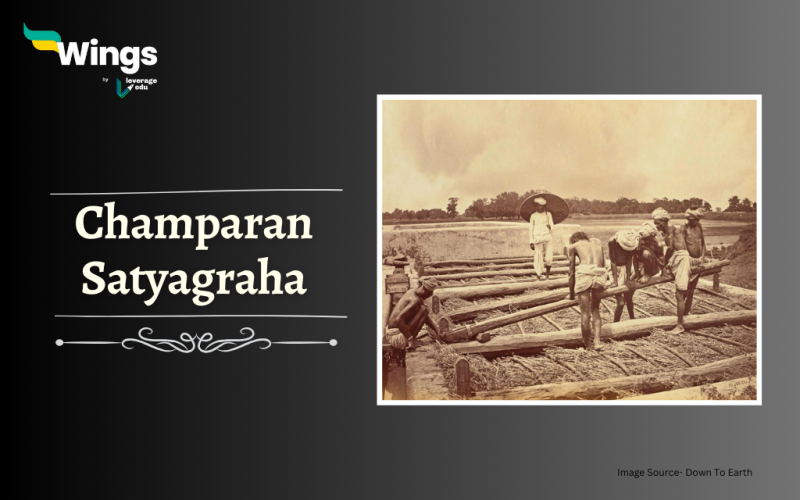Champaran Satyagraha is of utmost significance in India’s struggle for freedom. This pivotal event serves as a precedent for the upcoming Non-Cooperation Movement and Civil Disobedience Movement preceding the freedom of India. This event took place in the Champaran district of Bihar in 1917. In this district indigo farmers protested against the atrocities of British rule. The indigo planters refused to grow indigo for the colonial masters as this cash crop was destroying their lands. Owing to this, farmers were unable to cultivate food crops. To register their grievances, they agitated against British rule. This protest transformed into a satyagraha under the leadership of Mahatma Gandhi. Led by Mohandas Karamchand Gandhi, this protest had a profound impact on the modern history of India.
Table of Contents
Background of Champaran Satyagraha
In the early 20th century, the farmers of Champaran were forced to cultivate indigo on a significant portion of their land by British colonial planters.
- The “Tinkathia” system, which required the cultivation of indigo on 3/20th of the land, caused immense hardship to the farmers who were bound to these exploitative arrangements.
- The farmers were subjected to exorbitant rents and unfair treatment. This resulted in deep-seated resentment and suffering.

Gandhi’s Arrival in Champaran
In 1917, there emerged signs of resentment. These signs and worsening conditions of ‘Tinkathia’ farmers reached Gandhi.
- In the same year, Gandhi arrived in Champaran and initiated his fact-finding mission, He also met with several farmers to understand the exact situation.
- In addition, he started educating the local population about the power of non-violent protests and their rights.
- With these efforts, he was able to mobilise the masses. Moreover, he inspired farmers to stand up against injustice and strongly support the cause.

Furthermore, the arrest of Gandhi proved to be a turning point in Champaran Satyagraha. He was arrested because he refused to leave Chamaparn on the orders of British forces. This decision gathered public support and attracted nationwide support. This non-violent resistance was marked by protests, strikes, and demonstrations. Owing to this, the Brits were compelled to form a commission to investigate the grievances of Indigo planters.
Also Read: Revolt of 1857
Outcome of Champaran Satyagraha
The protest achieved multiple successes. The outcome of the satyagraha was –
- The demands for fair treatment and reduced rents were met.
- In addition, the oppressive Tinkathia system was abolished. However, beyond these tangible victories, the movement has an enduring legacy.
- The achievements of the movement lie in its demonstration of the power of non-violence.
Results
#1. When was Champaran Satyagraha started?
#2. Who led the Champaran Satyagraha?
#3. What was the reason for Champaran Satyagraha?
That’s all about Champaran Satyagraha! If you want to read more articles like this, you can get Study notes on the Modern History of India here. Also, you can visit our general knowledge page on Indian History!
 One app for all your study abroad needs
One app for all your study abroad needs
















